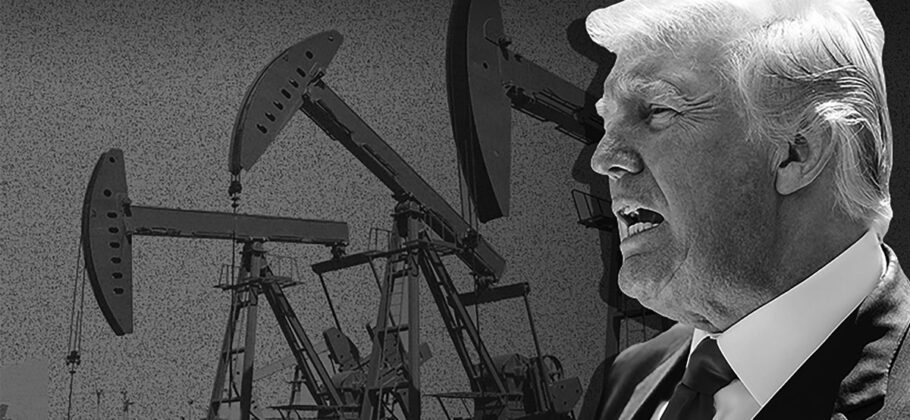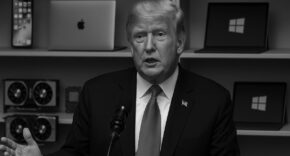A new executive order from U.S. President Donald Trump has abruptly halted the flow of Venezuelan oil to China, creating confusion in global energy markets and putting pressure on the fragile economic relationship between the two countries. This dramatic move is part of Trump’s broader campaign to apply economic pressure on Venezuela’s government and punish countries that continue to trade with it.
The order, announced on March 25, threatens a 25 percent tariff on all goods imported into the United States from any country that buys oil from Venezuela. That includes both direct oil imports and those coming through indirect channels, such as oil that is relabeled and rerouted through other nations. The policy is set to take effect on April 2, 2025, and is already having a chilling effect on the oil trade between Caracas and Beijing.
What the Executive Order Says
According to the order, “On or after April 2, 2025, a tariff of 25 percent may be imposed on all goods imported into the United States from any country that imports Venezuelan oil, whether directly from Venezuela or indirectly through third parties.”
This action was accompanied by a strong warning from Secretary of State Marco Rubio, who explained that “any country that allows its companies to produce, extract, or export from Venezuela will be subject to new tariffs, and any companies will be subject to sanctions.” These words sent a clear message that the United States intends to punish not just Venezuela, but also any nation that does business with it.
The policy caught many oil traders and refiners in China off guard. One Chinese oil executive told Reuters, “The worst thing in the oil market is uncertainty. We won’t dare touch the oil for now.” Another trading executive, representing an independent refiner in China, described the situation as chaotic, saying, “It’s a total mess. China is already in a tariff war with the U.S. So be it.”
Venezuela’s Lifeline to China
For years, China has been Venezuela’s most important oil buyer. In February 2025, China imported about 503,000 barrels per day (bpd) of crude oil and fuel from Venezuela, making up roughly 55 percent of Venezuela’s total oil exports. This oil trade is essential for Venezuela’s struggling economy, especially since the oil is usually sold at deep discounts due to U.S. sanctions.
Much of the oil China buys is the heavy Merey crude, which is favored by independent Chinese refiners known as “teapots.” These smaller refiners often rely on cheaper, sanctioned oil from countries like Venezuela, Iran, and Russia to stay profitable. The Merey grade is especially attractive because it is more affordable than other sanctioned crude.
To avoid sanctions, much of this oil is shipped under false labels. It is frequently rebranded as Malaysian oil after transshipment in Asian waters. These workarounds have allowed the trade to continue despite U.S. efforts to stop it, but Trump’s new order introduces a major obstacle that even these methods may not overcome.
Oil Tankers Left Waiting in Venezuela
The effects of the executive order are already visible at Venezuela’s main oil ports. At the Jose terminal, which is operated by the state-owned company PDVSA, shipping activity slowed down. As of March 25, three supertankers were still loading, but one berth was sitting idle. At the Bajo Grande terminal, which is responsible for shipping Venezuela’s heaviest crude, no tankers were loading at all.
About two dozen vessels, most of them supertankers, were waiting to load oil around the Jose port. According to TankerTrackers.com, two ships had already departed Venezuela empty since mid-February. If the situation continues, loading delays and shipping problems are expected to grow in the coming days.
Chevron, one of the few companies still allowed to operate in Venezuela under a U.S. license, has also started to reduce its presence. In February, Chevron exported about 294,000 bpd of Venezuelan oil. By March, that number had dropped to 252,000 bpd. Chevron also lowered the number of tankers it has positioned off the Venezuelan coast. Reuters reported that only seven Chevron cargoes had departed in March, compared to fifteen the month before.
Washington has given Chevron until May 27 to wind down its operations in Venezuela. This includes ending its crude exports to the United States. Once that deadline passes, Chevron’s presence in Venezuela may shrink even further, limiting Venezuela’s already small group of buyers.
China’s Response to U.S. Pressure
The Chinese government quickly voiced its disapproval of the new U.S. policy. At a press briefing in Beijing, Foreign Ministry spokesperson Guo Jiakun stated, “The United States has long abused illegal unilateral sanctions and so-called long-arm jurisdiction to grossly interfere in the internal affairs of other countries.”
Guo added, “Trade wars and tariff wars have no winners. Imposing additional tariffs will only inflict greater losses on American businesses and consumers.” His comments reflect China’s long-standing opposition to U.S. sanctions and its belief that such measures damage international trade.
Despite these strong words, Chinese refiners remain cautious. They are waiting to see if Beijing will formally tell them to stop buying Venezuelan oil. For now, most teapot refiners have paused their purchases. However, many in the industry believe that the trade will resume once buyers understand how the new policy will be enforced. One trader said that refiners “squeezed by narrow margins and in need of cheap feedstock would probably look to find ways to continue buying once they have more clarity.”
Another refinery official, whose company does not currently buy Venezuelan oil, said the impact of the order might be overblown. “Refiners do not care about the 25% tariffs. It’s up to China’s stance. What the U.S. does is a violation of free trade and China will clearly remain against it.”
Other Oil Flows Still Ongoing
In addition to commercial trade, China has been importing Venezuelan oil through a special deal tied to unpaid loans. A state-linked trading arm has been bringing in about 42,000 bpd of crude as part of an agreement to offset the billions of dollars Venezuela owes China. This arrangement appears to be continuing without interruption, even after the new U.S. order.
Meanwhile, the United States has also expanded sanctions on other players in the oil market. Last week, Washington imposed penalties on Shouguang Luqing Petrochemical, a teapot refinery in China, and on vessels that supply oil to similar facilities. These sanctions were mainly aimed at companies that buy Iranian crude, but they add to the overall tension surrounding sanctioned oil.
A Uncertain Future for Venezuelan Oil
For Venezuela, the executive order is another blow to an already weakened oil sector. The country, once one of the world’s top oil exporters, now relies on a handful of buyers willing to risk doing business under U.S. sanctions. By threatening tariffs on countries like China, Trump has made that risk even greater.
For China, the issue goes beyond oil. The country is already locked in a broader trade conflict with the United States. Trump imposed an extra 20 percent tariff on Chinese goods in February, and more penalties could be announced in April. In response, China has introduced its own counter tariffs and has begun restricting exports of key minerals and investigating foreign companies operating in its territory.
With both sides refusing to back down, the oil standoff between China and Venezuela may become part of a larger struggle between two economic powers. For now, oil tankers remain stuck, refineries are on hold, and the global oil market is left waiting for answers.











